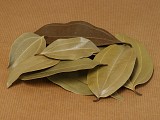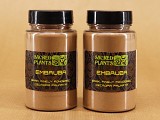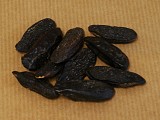Bark, Whole, 50 Gr from Brazil (SKU 5415)
Emburana (Amburana cearensis). This is an often used ingredient in Rapé preparations. The parts use are the bark and the seeds of Emburana. To prepare the tea, use the bark and/or the seeds of the Emburana in the proportion of two tablespoons for each litre of water. The tea is delicious. It provides a richt palette of sweet and spicey fragrances and tastes. More information can be found below.
Emburana bark. Packed in bags of 50 gram.
| change currency | |||||||||
| SKU | Part | Form | Weight | Unit | Price | Qty
|
|||
|---|---|---|---|---|---|---|---|---|---|
| 4022 | bark | whole | 25 gr | 1 pc | $ 3.78 | ||||
| 5415 | bark | whole | 50 gr | 1 pc | $ 6.93 | ||||
| 5416 | bark | whole | 100 gr | 1 pc | $ 12.60 | ||||
| 5417 | bark | whole | 250 gr | 1 pc | $ 27.71 | ||||
With the scientific name of Amburama cearensis, the plant Emburana is native of Brazil. It is a medium tree, capable of reaching up to 10 m in height. Its bark has a reddish-brown tone that stands out between thin blades. A fundamental point to recognise the Emburana tree are its whitish, extremely aromatic, tiny flowers, which form clusters that completely cover the leafless branches. The more remote times refer to Emburana as an efficient dressing flavouring, however, over time it was discovered that the plant had many other benefits.
Not only beautiful and fragrant, Emburana can also be consumed as tea to benefit the body of the individual. The tea is delicious. It provides a richt palette of sweet and spicey fragrances and tastes.
Much used in carpentry, the wood of the Emburana is light brown and light, in addition to being porous, used for interior and furniture works, because to maintain the characteristic smell of coumarin, it removes the insects for a long period. Native to the Caatinga, the plant can be found mainly in northeastern Brazil, and has been used for centuries by the Cabocla population.
Other names: Amburana cearensis, Emburana, Amburana
Its scientific name is Amburana Cearensis, it is native to the caatinga, the northeastern savannah, its size can reach up to ten meters height. One of its most appreciated and striking features are its small whitish flowers, which form beautiful bunches over the branches and exude a very pleasant aroma. The bark of the Emburana has a characteristic red color and is much appreciated for its flavour and medicinal properties. Because of its unique smell it is widely used for aromatisation for example in cachaça or Tabaco products like Rapé or cigars.
Emburana (Amburana cearensis). The parts used for medicinal purposes are the bark and the seeds of Emburana. Among its active principles are coumarin and hydrocoumarin, flavonoids, vanillic acid, glycerides of palmitic, linoleic, oleic and stearic acids, as well as containing a protein that is capable of rendering trypsin and coagulation factor XII inactive.
To prepare the tea, use the bark and the seeds of the Emburana in the proportion of two tablespoons for each liter of water. Put the bark, seeds and water in a container and bring to the fire. Once boiling, let it cook for about ten minutes and then remove from the heat. Cover and let the mixture stand for approximately ten minutes. After that time, cool it and drink without sweetening. The indicated dose is two to three cups daily. Before consuming any medicine, it is important to consult your doctor to learn about interactions with other medicines. Embryonic tea is contraindicated for patients with blood clotting disorders.
Against high fever in children, two tablespoons of peels are cooked in a liter of water, let it boil for 10 minutes and when cooling, bathe the little ones. Internal use is mostly taken as tea but can be in pills, syrup produced by cooking the bark and seeds and powder of the crushed seeds.
Attention: They have not been reported against indications or side effects from the use of Emburana, however, it should be kept in mind that any drug treatment - be it natural or drug - should be guided and accompanied by a trusted specialist physician.
This item is not allowed in the following countries:
Taiwan
This natural product is offered for its ethnographic and historical value and is delivered with no expressed or implied fitness for a specific purpose. It is simply a raw botanical specimen, or a scientific sample. The information provided is purely meant for historical, scientific and educational purposes and should never be interpreted as a recommendation for a specific use. The use and application of our product is at the customer's decision, responsibility and risk.
Read our Terms & Conditions for more details.


